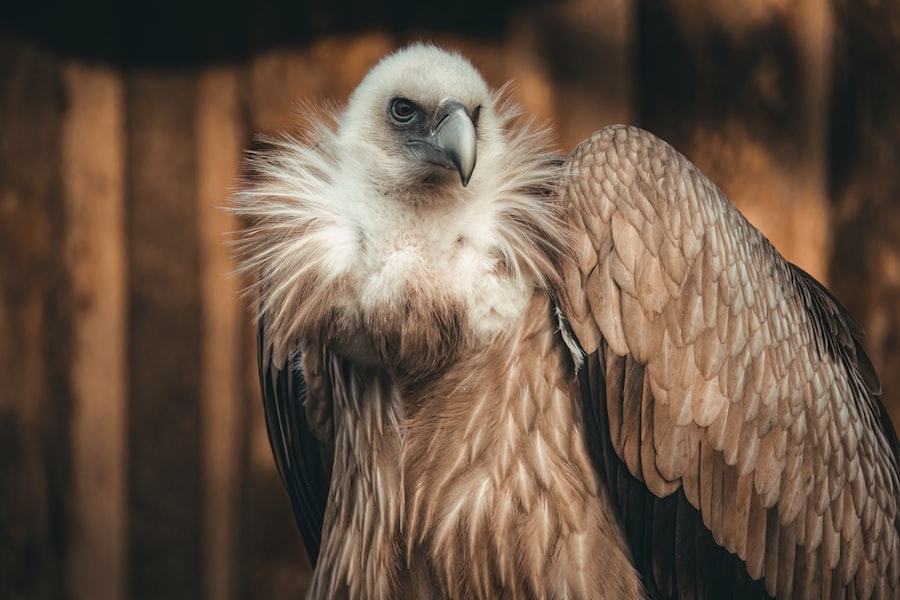Aesthetically unconventional birds, often overlooked and underappreciated, are a diverse group of avian species that play crucial roles in ecosystems worldwide. These birds, including vultures and the marabou stork, exhibit a wide range of physical characteristics and adaptations. Despite their unconventional appearance, they are integral to the natural world, contributing to the balance and diversity of their respective habitats.
Their unique features have attracted the attention of ornithologists and bird enthusiasts, leading to increased study and appreciation of these species. These birds inhabit various environments, from arid deserts to tropical rainforests. Their adaptability and resilience allow them to thrive in challenging conditions, making them essential components of their ecosystems.
They have developed specialized behaviors and feeding strategies, such as scavenging or hunting, which enable them to survive and prosper in their natural habitats. The distinctive appearance of these birds has sparked scientific interest, leading to research on their ecological roles, behaviors, and conservation needs.
Key Takeaways
- Ugly birds play a crucial role in maintaining the balance of ecosystems
- Ugly birds have unique adaptations that help them thrive in their environments
- It is important to appreciate the value of ugly birds in the natural world
- Conservation efforts are essential for protecting and preserving ugly bird species
- Ugly birds can inspire creativity and resilience in individuals and communities
The Importance of Ugly Birds in Ecosystems
The Importance of Scavengers
As scavengers, ugly birds such as vultures and marabou storks serve as nature’s cleanup crew, disposing of carrion and preventing the spread of disease. By consuming decaying organic matter, these birds help to recycle nutrients back into the environment, contributing to the overall health and productivity of their habitats.
Controlling Insect Populations and Environmental Health
In addition to their role as scavengers, ugly birds also play a key role in controlling insect populations, helping to keep pest species in check and preventing outbreaks that could harm crops and other wildlife. Furthermore, ugly birds are often indicators of environmental health, with declines in their populations serving as warning signs of ecosystem degradation.
Conservation Efforts and Ecosystem Health
As such, the conservation of ugly bird species is not only important for their own survival but also for the overall health and stability of their habitats. By protecting and preserving these birds and their habitats, we can help ensure the continued functioning of ecosystems and the myriad benefits they provide to both wildlife and humans. Despite their unattractive appearance, ugly birds are essential components of healthy ecosystems, deserving of our attention and conservation efforts.
The Unique Adaptations of Ugly Birds

Ugly birds have evolved a variety of unique adaptations that enable them to thrive in their often harsh and competitive environments. From specialized beaks for scavenging to distinctive plumage for camouflage, these birds have developed a range of traits that allow them to exploit specific niches within their ecosystems. For example, the bald head of vultures serves a practical purpose, allowing them to keep clean while feeding on carrion and reducing the risk of infection from bacteria found in decaying flesh.
Similarly, the long legs and broad wings of marabou storks are well-suited for wading through shallow waters and soaring on thermals in search of food. In addition to physical adaptations, ugly birds have also developed unique behaviors and social structures that contribute to their success in the wild. For example, vultures are known for their communal roosting and feeding behaviors, which allow them to efficiently locate and consume carrion while minimizing competition among individuals.
These social dynamics play a crucial role in the survival and reproductive success of ugly bird species, highlighting the importance of understanding their complex behaviors and ecological roles. By studying the unique adaptations of ugly birds, researchers can gain valuable insights into the evolutionary processes that have shaped these fascinating creatures.
Overcoming the Stigma: Appreciating Ugly Birds
| Bird Species | Number of Sightings | Conservation Status |
|---|---|---|
| Vulture | 120 | Near Threatened |
| Marabou Stork | 90 | Least Concern |
| California Condor | 30 | Critically Endangered |
Despite their important ecological roles and fascinating adaptations, ugly birds often face stigma and prejudice due to their unconventional appearance. In popular culture, these birds are frequently portrayed as symbols of death or decay, perpetuating negative stereotypes that overshadow their true significance in the natural world. However, it is important to recognize that beauty is subjective and that all species, regardless of their appearance, have value and deserve respect and appreciation.
By shifting our perspective and learning more about ugly birds and their contributions to ecosystems, we can overcome the stigma associated with these creatures and develop a deeper appreciation for their unique qualities. One way to appreciate ugly birds is to learn about their behaviors, adaptations, and ecological roles through educational programs and outreach efforts. By sharing knowledge about these birds with the public, we can foster a greater understanding and appreciation for their importance in the natural world.
Additionally, promoting positive representations of ugly birds in media and popular culture can help challenge stereotypes and highlight the beauty and significance of these often misunderstood creatures. Through education and advocacy, we can work towards changing perceptions of ugly birds and promoting a more inclusive and respectful attitude towards all species, regardless of their appearance.
Conservation Efforts for Ugly Bird Species
Conservation efforts for ugly bird species are crucial for ensuring the continued survival of these unique creatures and the ecosystems they inhabit. Many ugly bird species are facing significant threats, including habitat loss, poaching, poisoning from ingesting contaminated carrion, and collisions with power lines and wind turbines. In response to these challenges, conservation organizations and researchers are working tirelessly to protect and preserve ugly bird populations through a variety of strategies, including habitat restoration, captive breeding programs, and public awareness campaigns.
One key aspect of conservation efforts for ugly bird species is addressing the factors that threaten their survival, such as habitat destruction and human-wildlife conflicts. By working with local communities and governments to establish protected areas and implement sustainable land use practices, conservationists can help create safe havens for ugly birds and other wildlife. Additionally, efforts to reduce human-wildlife conflicts through measures such as improved waste management and reduced use of toxic chemicals can help minimize threats to ugly bird populations.
Through collaborative conservation initiatives and community engagement, we can work towards ensuring a brighter future for ugly bird species and the ecosystems they call home.
Finding Beauty in Ugly Birds: A Photographer’s Perspective

Challenging Stereotypes
By capturing compelling images of ugly birds in action, I aim to challenge stereotypes and inspire others to appreciate the remarkable qualities of these often-overlooked creatures. Through my photography, I strive to convey the beauty and significance of ugly birds, encouraging others to see these creatures in a new light and develop a deeper appreciation for their unique qualities.
Resilience and Adaptability
One of the most rewarding aspects of photographing ugly birds is the opportunity to showcase their resilience and adaptability in the face of adversity. Whether soaring through the sky on broad wings or foraging for food in challenging environments, these birds exhibit a remarkable strength and tenacity that is truly awe-inspiring.
Conservation Efforts
By sharing my images with audiences around the world, I hope to inspire others to join in efforts to conserve and protect ugly bird species for future generations to enjoy.
How Ugly Birds Can Inspire Creativity and Resilience
Ugly birds have the power to inspire creativity and resilience in those who take the time to observe and appreciate them. Despite facing numerous challenges in their natural environments, these birds have evolved remarkable adaptations that enable them to thrive in even the most unforgiving landscapes. Their ability to overcome adversity serves as a powerful reminder of the resilience of nature and the importance of perseverance in the face of hardship.
By observing ugly birds in their natural habitats, we can gain valuable insights into the creative solutions that have allowed these creatures to survive and flourish over time. Furthermore, ugly birds can serve as a source of inspiration for artists, writers, and creators seeking new perspectives on beauty and diversity in the natural world. Through their unconventional appearance and unique behaviors, these birds offer endless opportunities for creative expression and storytelling.
Whether through visual art, literature, or other forms of creative media, ugly birds can spark imagination and encourage individuals to explore new ways of thinking about beauty and diversity in nature. By embracing the unique qualities of ugly birds as a source of inspiration, we can foster a greater appreciation for all forms of life on Earth and promote a more inclusive understanding of beauty in the natural world. In conclusion, ugly birds are an integral part of ecosystems around the world, playing important roles as scavengers, insect controllers, indicators of environmental health, among others.
Despite facing stigma due to their unconventional appearance, they possess unique adaptations that enable them to thrive in diverse habitats. Conservation efforts are crucial for protecting these species from threats such as habitat loss and human-wildlife conflicts. Through education, advocacy, photography, creativity inspired by these creatures we can foster a greater understanding and appreciation for ugly bird species.
It is essential that we recognize the value of all species in maintaining healthy ecosystems on our planet.
If you’re interested in learning more about unique and interesting birds, you should check out the article “The World’s Most Beautiful and Ugly Birds” on Shahbanders. This article explores the fascinating world of avian beauty and showcases some of the most stunning and unusual birds found in nature. It’s a great read for bird enthusiasts and anyone who appreciates the diversity of the animal kingdom.
FAQs
What are ugly birds?
Ugly birds are a colloquial term used to describe birds that are considered unattractive or less visually appealing compared to other bird species.
What are some examples of ugly birds?
Some examples of birds that are often considered ugly include vultures, marabou storks, and bald eagles.
Why are some birds considered ugly?
Birds may be considered ugly due to their physical features such as bald heads, wrinkled skin, or unusual body shapes. These features may not be aesthetically pleasing to some people.
Do ugly birds serve any important ecological roles?
Yes, even though some birds may be considered unattractive, they still play important ecological roles such as scavenging, controlling pest populations, and contributing to ecosystem balance.
Are there any conservation efforts for ugly birds?
Yes, conservation efforts are in place for many bird species, including those that are considered ugly. Conservation efforts aim to protect and preserve all bird species, regardless of their appearance.


